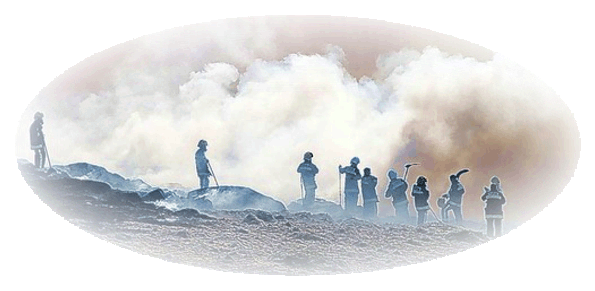
“So we ascend Hare Tor, of shape more conical than most of the Dartmoor heights. I have remarked that on the western side the outline bears a strong resemblance to the animal in its couchant form, which probably accounts for its name. I have heard it suggested that this tor was at one time a volcano. This suggestion may be due to two causes, its conical shape, and the hollow on the summit, which reminds one of a crater, though of diminutive extent.”, J. Ll. W. Page, p.105.
Hare Tor – ‘The Vesuvius of Dartmoor‘, OK a very, very tongue in cheek statement but as can be seen above some early topographical writers thought it plausible enough to include in their work. Coming back to earth, Hare Tor is one of Dartmoor’s ‘tuits’ and should be on the tor bucket list and one which every Moor enthusiast should get around ‘to it’ some day.
As can be gathered from above, Page had the notion, along with a number of other writers, that Hare Tor became so known due to the fact that from a certain aspect the rocks assume the shape of a crouching hare. However, it is more likely that the name has derived from a corruption of the word ‘hay’ thanks to a dialect pronunciation. William Crossing notes how on an old estate map of nearby Wapsworthy Manor there is mention of both ‘Great’ and ‘Little Hay Tors’. In a similar vein there is, just to the north of Hare Tor, a small tumulus which acts as a boundary point for Willsworthy Manor called ‘Hay Tor Bound’, p.173. Therefore it does not take too much imagination to see how the word ‘High’ becomes ‘Hay’ when spoken in the Dartmoor vernacular which in turn mutates to ‘Hare‘. Another theory about the name’s origin is that when approached from the western side the rocks take on the appearance of a crouching hare which sadly either takes a great deal of imagination or a bucketful of cider.

Due to its wide ranging views the military built an observation post, probably some time in the 1920s which allowed them to observe any military manoeuvres and ensure nobody interfered. This has now been dismantled leaving just some low walls. There is also the remnants of a concrete platform on which a range warning flagpole sat. This particular flagpole has now been replaced by a newer version.
For those of a druidical bent there are a couple of rock basins on Hare Tor however as Dartmoor rock basins go these are not too spectacular, maybe in a few thousand years more.
On the lower northern slopes of the tor (OS grid reference SX 551 845) is a Bronze Age cairn that was ‘examined’ in 1905 and found to contain nothing of note. It quietly lays under a quilt of heather and has a diameter of about 11.6 meters and stands at an average height of 0.8 metres. Unfortunately modern man or woman has decided that the original construction was not up to standard and so have added a ‘walker’s cairn’ for good measure. As noted above, this cairn is known as the ‘Hey Tor Bound‘ and once was a bond mark for Willsworthy Manor, today it serves as a bound marker for the parish of Peter Tavy.
Down on the south western lower slope of the tor sits an unfinished granite trough (OS grid reference SX 5459 8411) which measures 1.3 x 0.4 metres. One can imagine the stone cutter beginning his task and then at some point Dartmoor treated him to a spell of its harsh weather. At this point he said to himself; “sod this for a game of soldiers, I’m off down the pub,” and then never returned. Actually, thinking about it, with such a rock strewn hillside such as this and many others on the moor, how did the stone cutters remember where the rock they were working on was located? Clearly they would have returned to it each day?
Back in the day many moorfolk would earn some extra money from picking ‘Hurts’ better known as – Whortleberries. It was to the slopes of Hare Tor that they would ascend for the harvest as this was a renown spot where the plant grew in abundance. Even today nestled amongst Hare Tor’s clitter the juicy little mauve gems can still be found in quantity.
At the southern foot of Hare Tor sits it’s sister – Little Hare Tor, a much smaller outcrop but still one that affords excellent vistas

Back in the April of 2013 a massive gorse fire erupted on the north moor, it is said to have started on Chat Tor which lies about a kilometre to the north of Hare Tor. Fanned by strong winds the flames soon spread southwards thus setting all the gorse and heather alight on Hare Tor. As can be seen below fire fighters somehow managed to get to the tor and helped by local commoners tackled the blaze. Reports at the time stated that the smoke plume could be seen up to forty miles away.

So, there you have Hare Tor, a stiff climb when approaching from the west, wide ranging views and plenty of whortleberries when in season. Please be aware that it sits within the military range so it’s always advisable to check the firing times before going there – see link opposite.

Crossing, W. 1990. Crossing’s Guide to Dartmoor. Newton Abbot: Peninsula Press.
Page, J. Ll. W. 1895. An Exploration of Dartmoor & Its Antiquities. London: Seeley & Co.
 Legendary Dartmoor The many aspects past and present of Dartmoor
Legendary Dartmoor The many aspects past and present of Dartmoor
